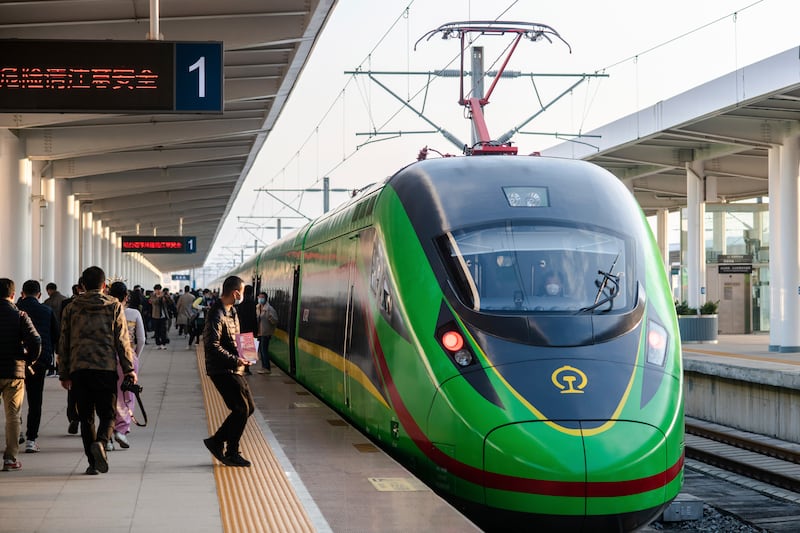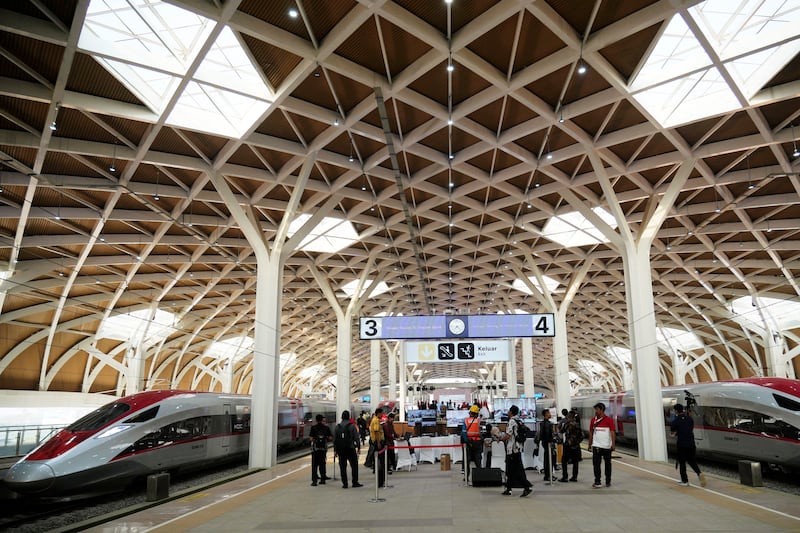China’s role in developing countries’ finances has transformed from capital provider to chief debt collector as a “tidal wave” of repayments due on loans Beijing extended under its Belt and Road Initiative far outstrip new disbursements, a new report by an Australian think tank showed.
Under the Belt and Road Initiative (BRI), Beijing has disbursed over $1 trillion in loans to more than 150 countries to build a network of roads, airports, railways, telecommunication networks, and seaports to connect China to the rest of the world. Critics have accused China of setting up debt traps and expanding geopolitical and economic influence through BRI.
According to the report by the Lowy Institute, developing countries owe a record $35 billion in debt repayments to China in 2025, with debt servicing costs on projects financed by BRI – which Chinese President Xi Jinping launched with great fanfare in 2013 – set to remain elevated for the rest of the decade.
Around $22 billion, or about two-thirds of the total $35 billion in debt repayments due in 2025, will be made by 75 of the world’s poorest and most vulnerable countries, threatening critical spending for health, education, poverty reduction and climate adaptation efforts, the report said.
“China’s role as a lender has passed a watershed,” wrote Riley Duke, the author of the report titled “Peak Repayment: China’s Global Lending”.
“The nation that was once the developing world’s largest source of new finance has now wholly transitioned to being the world’s largest single destination for developing country debt service payments,” added Duke, research fellow on the Lowy Institute Pacific Aid Map.
New Chinese loan commitments have also remained at around $7 billion per year since 2023, shifting from being a net provider of financing – where it lent more than it received in repayments – to a “net drain,” as repayments now exceed loan disbursements, the report said.
In 2012, China was a net drain on the finances of only 18 developing nations; by 2023, that number has more than tripled to 60.
“China is grappling with a dilemma of its own making: it faces growing diplomatic pressure to restructure unsustainable debt, and mounting domestic pressure to recover outstanding debts, particularly from its quasi-commercial institutions,” wrote Duke.

Geopolitical leverage
Despite the broader decline in global lending, China continues to finance strategic or “politically significant borrowers,” and remains the largest bilateral lender in seven out of its nine land neighbors. These include Laos, Myanmar, Pakistan, Mongolia, Kazakhstan, Kyrgyzstan, and Tajikistan.
The report said that new loans also feature as a diplomatic dealmaking tool, particularly in getting other countries to adopt Beijing’s “One China” policy, which states that the People’s Republic of China is the sole legitimate government of China, including self-ruling Taiwan as part of its territory.
For example, China announced new financing for several countries, including Honduras, Nicaragua, and Solomon Islands, just months after they officially declared that “Taiwan is an inalienable part of Chinese territory” and switched diplomatic recognition from Taipei to Beijing.
In June 2023, Honduras became the latest Central American country to join BRI, reducing Taiwan’s diplomatic allies in the region to just two – Guatemala and Belize – amid China’s growing economic influence through investments, loans, and trade.
New loan deals have been resilient also for developing countries that are exporters of critical mineral resources or battery metal, such as Indonesia, Argentina, Brazil, and the Democratic Republic of Congo, receiving more than $8 billion in disbursements in 2023, or over a third of China’s total loan outflows for that year, the report said.
“Rising debt-service costs raise questions about whether China could use the repayments for geopolitical leverage,” wrote Duke. “Some argue that China’s lending boom in the 2010s reflected an intentional effort at ‘debt-trap diplomacy’ aimed at pushing countries into debt problems so that geopolitical concessions could later be extracted,” he added.

On Tuesday, in response to a query about the key findings in the Lowy Institute report, Chinese government spokesperson Mao Ning told reporters that China’s cooperation on investment and financing with developing countries follows international practice, market principles, and the principle of debt sustainability.
“A handful of countries are spreading the narrative that China is responsible for these countries’ debt,” Mao said. “They ignore the fact that multilateral financial institutions and commercial creditors from developed countries are the main creditors of developing countries and the primary source of debt repayment pressure. Lies cannot cover the truth and people can tell right from wrong,” she added.
Impact of debt burden
Today, China is the largest source of bilateral debt service for developing countries, accounting for more than 30% of all such payments in 2025, according to data reported by debtor governments to the World Bank.
As of 2023, some 3.3 billion people live in countries that spend more on interest payments than on health or education, the report said.
“The high debt burden facing developing countries will hamper poverty reduction and slow development progress while stoking economic and political instability risks,” Duke wrote in the report.
In 54 out of 120 developing countries with available data, debt service payments to China exceed the combined payments owed to the Paris Club — a bloc that includes all major Western bilateral lenders, the report said.
Chinese debt servicing is particularly dominant in Africa but also equals or exceeds that owed to Paris Club members by a majority of countries in South America, the Pacific Islands, South Asia, Central Asia, and Southeast Asia, the report said.
“As Beijing shifts into the role of debt collector, Western governments remain internally focused, with aid declining and multilateral support waning. Without fresh concessional financing or coordinated relief, the squeeze on budgets will tighten further, deepening development setbacks and heightening instability risks,” Duke added.
Edited by Mat Pennington.



